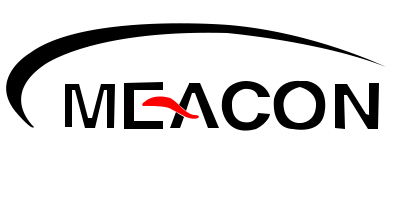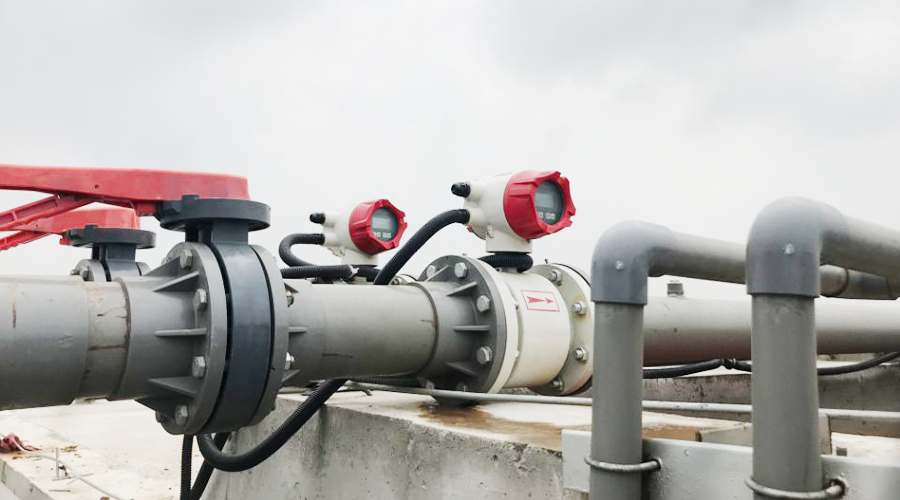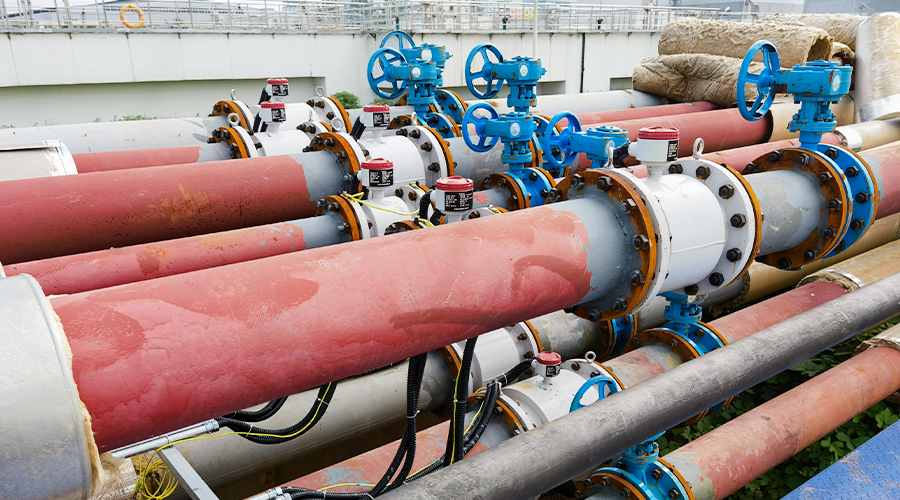Brief Introduction
We expound on the classification of automatic instruments in sewage treatment and explains the design principles and design precautions of automatic instruments in combination with the specific working conditions of sewage treatment. Finally, the application of automatic instruments in sewage treatment is briefly explored.
With the rapid development of the global economy and the increase in the degree of industrialization, the pollution of water resources is also increasing, especially the increase in the discharge of urban sewage and industrial sewage, resulting in increasingly serious water pollution. The country pays more and more attention to the protection of water resources and has increased the treatment of urban sewage and industrial sewage. It is necessary to achieve the best effect of various sewage treatment processes, the normal operation of treatment equipment, and accurate monitoring of water quality and water volume of sewage treatment, etc. Higher requirements have been put forward, which puts forward new requirements for the design and application of automatic instruments in sewage treatment.
The importance of automated instruments in sewage treatment
In the process of modern sewage treatment, no matter what process is used, there are a large number of parameters that need to be detected in the process. Therefore, at present, large-scale domestic sewage treatment plants or process sewage treatment plants generally have liquid level, liquid level difference, flow, pressure, etc., pH value, temperature, dissolved oxygen, sludge concentration, redox potential, sludge interface, online BOD, online COD, online ammonia nitrogen, online total phosphorus and other automated instruments.
Through the various process detection parameters obtained by these detection instruments, various process equipment in the process can be controlled, and the relationship between supply and demand, system components, and various sewage treatment processes can be coordinated so that various equipment and facilities are more fully and rationally used. Among them, some important process parameters in the process, such as dissolved oxygen value, aeration rate, etc., are important guarantees to ensure the automatic control of the process, and the reasonable operation of the process equipment can be automatically adjusted and controlled through the detection values of these instruments.
These automatic instruments do not only play an irreplaceable guiding role in the sewage treatment process, but also can monitor and alarm the multi-process treatment process to ensure the safety of production and equipment, and also play an important role in providing detection indicators to relevant management departments. To sum up, it can be seen that automatic instruments play an important role in the sewage treatment process, and are the prerequisites for computer control and the basis of automatic control.
The classification of commonly used instruments in water treatment systems
1.Classification of commonly used instruments
In the process of sewage treatment, various parameters need to be measured, such as liquid level, liquid level difference, flow rate, pressure, pH value, temperature, dissolved oxygen, sludge concentration, redox potential, sludge interface, online BOD, online COD, online ammonia nitrogen, online total phosphorus, etc. Physical quantities such as temperature, pressure, liquid level, and flow, are generally called thermal quantities. Parameters such as pH, temperature, dissolved oxygen sludge concentration, redox potential, etc., are referred to as component quantities. Instruments used to measure thermal quantities are generally called thermal measuring instruments; instruments used to measure component quantities are generally called component analysis instruments and are often called water quality analysis instruments in the process of sewage treatment.
2.Composition of Measuring Instruments
There are many types of measuring instruments, complex types, and different structures, but they all have a common task: to measure the value of the measured parameter. Therefore, it has an obvious commonality in composition. They are generally composed of the measuring element (sensor) part, the intermediate transmission part, and the display part (including conversion into other signals).
Design principles of automatic instruments in sewage treatment
When designing automatic instruments in sewage treatment, it is necessary to consider the representativeness of sampling and analysis of automatic instruments. It should also ensure the stable operation of the automatic control system, ensure the safe operation of the sewage treatment process, and improve the effluent quality of sewage treatment plants. Therefore, when designing and selecting automatic instruments in sewage treatment, instruments with high measurement accuracy, stable operation, convenient maintenance, and intelligent operation should be selected as much as possible to reduce the difficulty of instrument operation and management. At the same time, because the sewage treatment environment has strict requirements on instruments, there are often situations of downhole measurement, open-air measurement, and even measurement in sewage.
Therefore, when selecting the type of automatic instrument, it is necessary to select the appropriate instrument according to the operating environment Instruments, to ensure the normal operation of automated instruments, and minimize the possibility of instrument failure, prolonging the service life of the instrument. For instruments used on special occasions, special performance needs to be paid attention to. For example, automatic instruments used in sewage treatment plants in minefields should have certain lightning protection functions and be connected with grounding devices to ensure the safe operation of the instruments; while instruments installed in mud areas with high biogas concentrations. It should have a reliable explosion-proof system to avoid the occurrence of acoustic explosions caused by the interference of biogas during the operation of the equipment, which will bring economic losses to the sewage treatment plant.
In addition, when selecting automatic instruments used in the sewage treatment process, it is also necessary to consider the difficulty of instrument operation, whether the operation is stable or not, and whether it is economical and energy-saving. And try to apply cost-effective instruments to reduce the operating cost of the sewage treatment plant and maintain the stability of the sewage treatment process.
Application of automatic instruments in sewage treatment
In the process of sewage treatment, many indicators need to be involved. Therefore, the automatic instruments used for the monitoring of sewage treatment parameters also have different classifications. According to the different measurement contents of the instruments, they can be classified into two categories, one is thermal Industrial instruments, including instruments for measuring temperature, flow, pressure, and other parameters, this type of instrument is mainly composed of measuring elements, transmission parts and display parts; the other type is composition analysis instruments, such as online BOD meter, dissolved oxygen meter, On-line COD instrument, etc. These instruments are highly specialized and can only analyze the composition of a specific medium. In this paper selects several commonly used instruments in the process of sewage treatment to introduce and analyzes their application in the process of sewage treatment.
1. Temperature sensor
Temperature and pressure instruments are usually used in the anaerobic digestion process of sewage treatment to monitor the degree of anaerobic digestion and provide a scientific and reliable basis for adjusting the conditions of anaerobic digestion and promoting the process of anaerobic digestion. Among the temperature instruments, the commonly used thermal element is platinum thermal resistance. In the process of sewage treatment, the number of control points that need to be monitored for temperature is relatively small. Therefore, a temperature transmitter can be used to convert the thermal signal into an electrical signal. Connecting it with an analog module simplifies the process of data reading and processing.
2. Flow meter
Flow meters play a very important role in the process of sewage treatment. They can monitor key parameters such as the inflow and outflow of sewage treatment plants, sludge return flow, aeration volume, etc., so as to control the operating conditions of sewage treatment equipment, It provides a basis for judging the operation status of sewage treatment equipment and improves the economic benefits of sewage treatment plants. Common flow meters, mainly include ultrasonic flow meters, electromagnetic flow meters, open channel flow meters, differential pressure flow meters, etc., which can be used for flow monitoring in different stages of a variety of processes, which is of great significance to improving the stability of sewage treatment equipment operation.
3. Dissolved oxygen meter
At present, in the general sewage treatment process, the activated sludge method, biofilm method, aerobic anaerobic microbial treatment method, etc., is widely used. One of the important factors to maintain the normal life activities of microorganisms is the presence of dissolved oxygen in the water. Therefore, monitoring the dissolved oxygen in water helps to maintain the activity of microorganisms, provides a scientific reference for adjusting the aeration rate, and plays an important role in preventing the occurrence of sludge filamentous expansion in the activated sludge process and improving the treatment effect of sewage. The dissolved oxygen meter is mainly divided into two parts, the sensor, and the transmitter. When using it, attention should be paid to the installation position of the dissolved oxygen meter to ensure the accuracy of the instrument measurement.
4. Chemical oxygen demand analyzer
The chemical oxygen demand of sewage is an important index to measure the effect of sewage treatment. Specifically, it refers to the total amount of strong oxidant consumed per unit volume of sewage under certain conditions. It is a key parameter to measure the content of organic matter in sewage. Therefore, strengthening the measurement of the COD index in the process of sewage treatment plays an important guiding role in regulating the technological process of sewage treatment and improving the effect of sewage treatment.
5. Other instruments
Sewage treatment system automation instruments also include paperless recorders, solenoid valves, self-stirring sewage pumps, automatic pressure switches, etc. The paperless recorder has the functions of high-speed information collection and processing, universal signal input, large-capacity flash memory chip to realize the ultra-long-term data storage, use USB interface to store backup or dump historical data, etc., and can simultaneously indicate the upper and lower limits of each channel Call the police. Reasonable circuit design makes the agitator, pump, and solenoid valve interlocked, realizing fully automatic sewage treatment.
To realize the modern management of sewage treatment plants, automatic instruments must be used. When selecting an instrument, it should be stable and reliable, easy to operate, easy to install, high in quality and low in price, continuous measurement, sensitive in response, strong in interchangeability, and easy to maintain. After the instrument is put into use, the accuracy of the instrument should be guaranteed to facilitate the normal operation of the monitoring system.
Post time: Apr-06-2023


